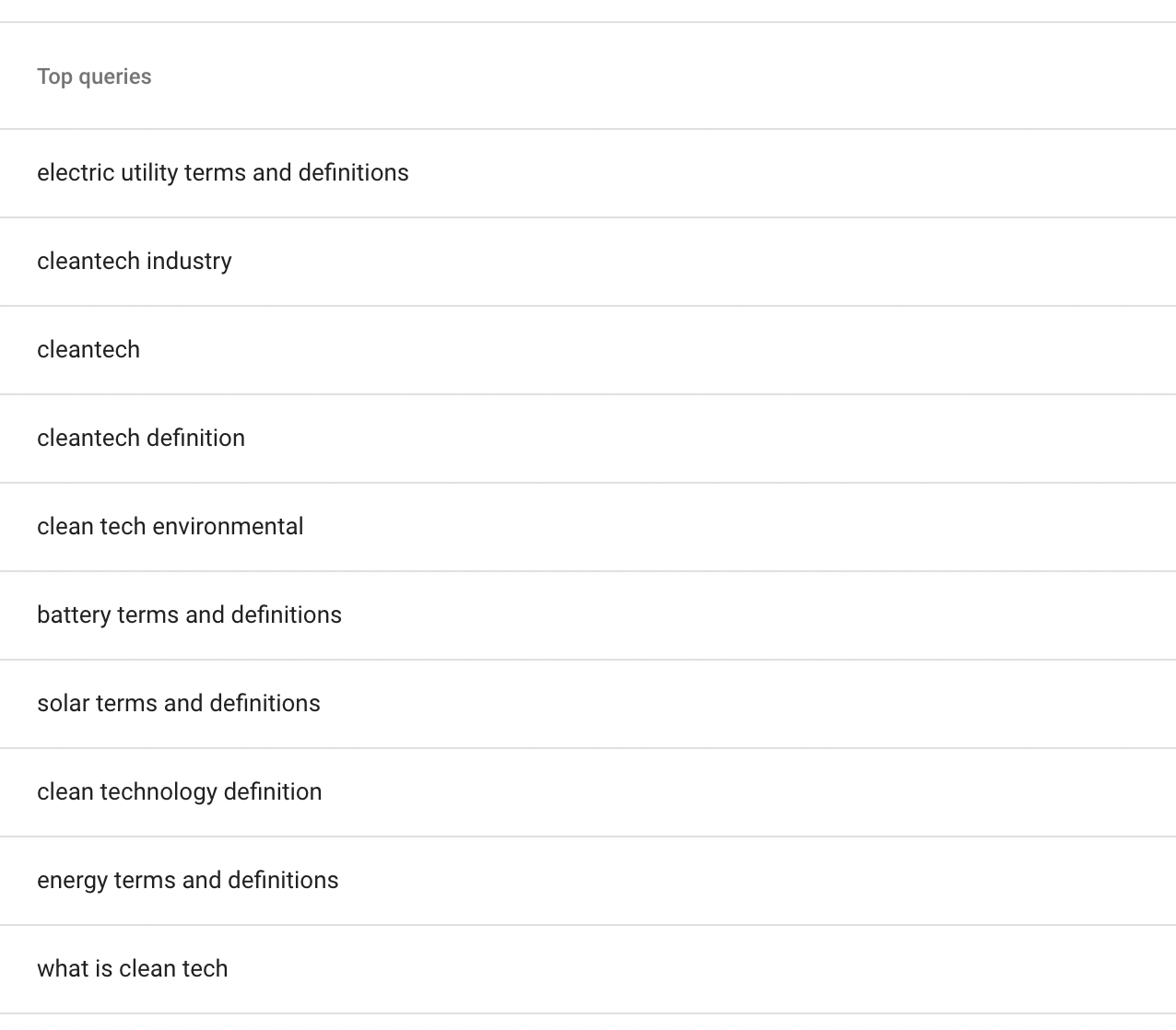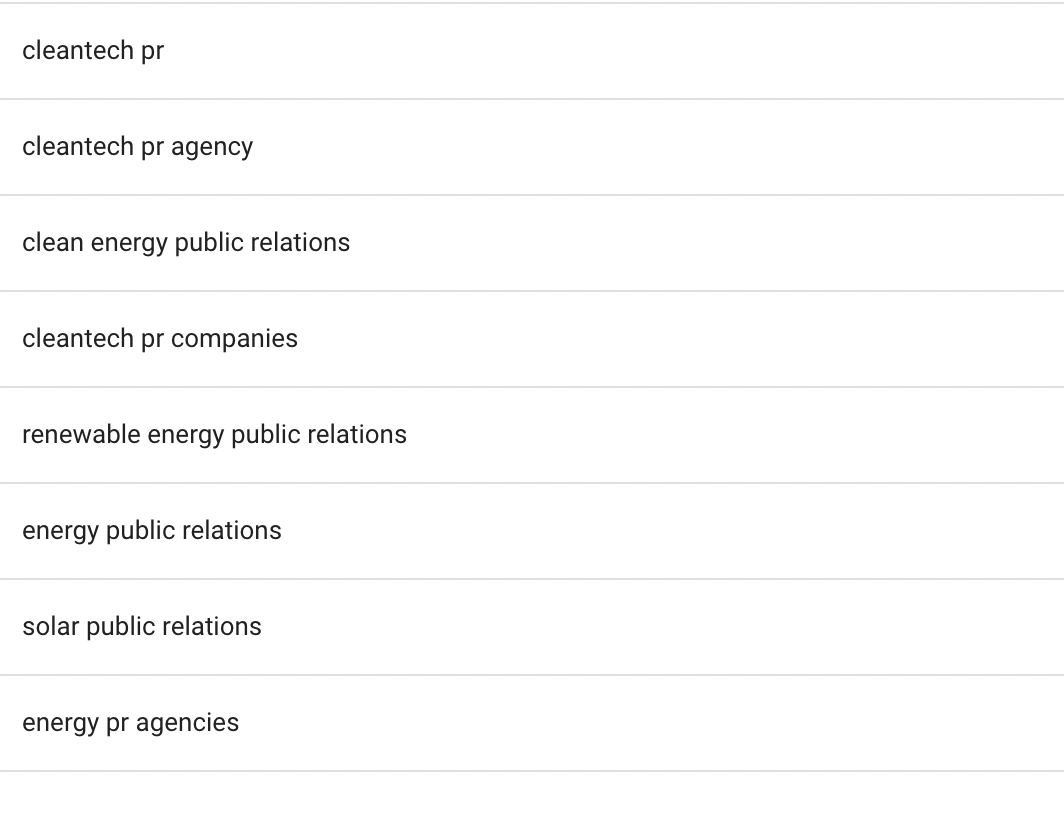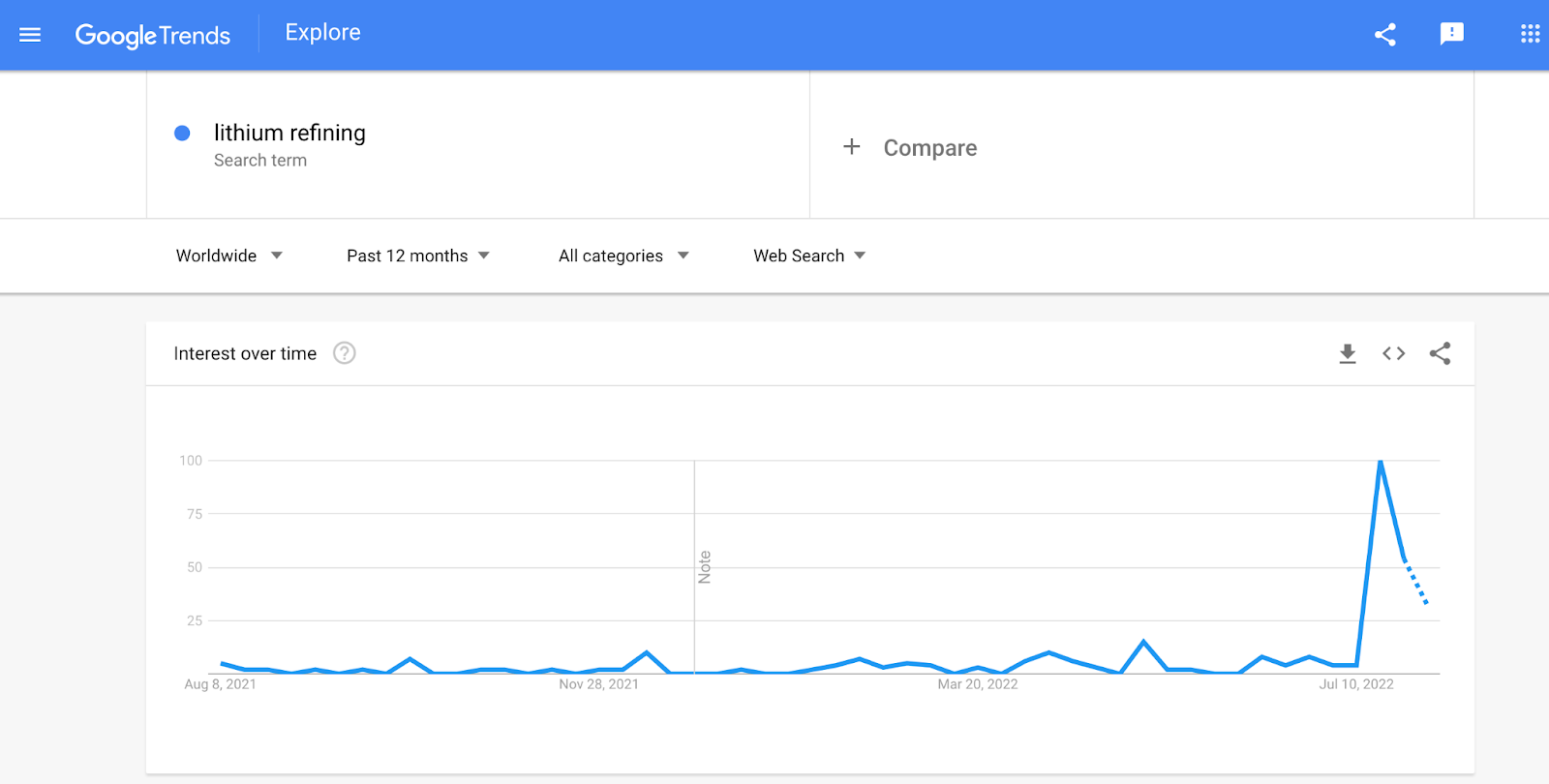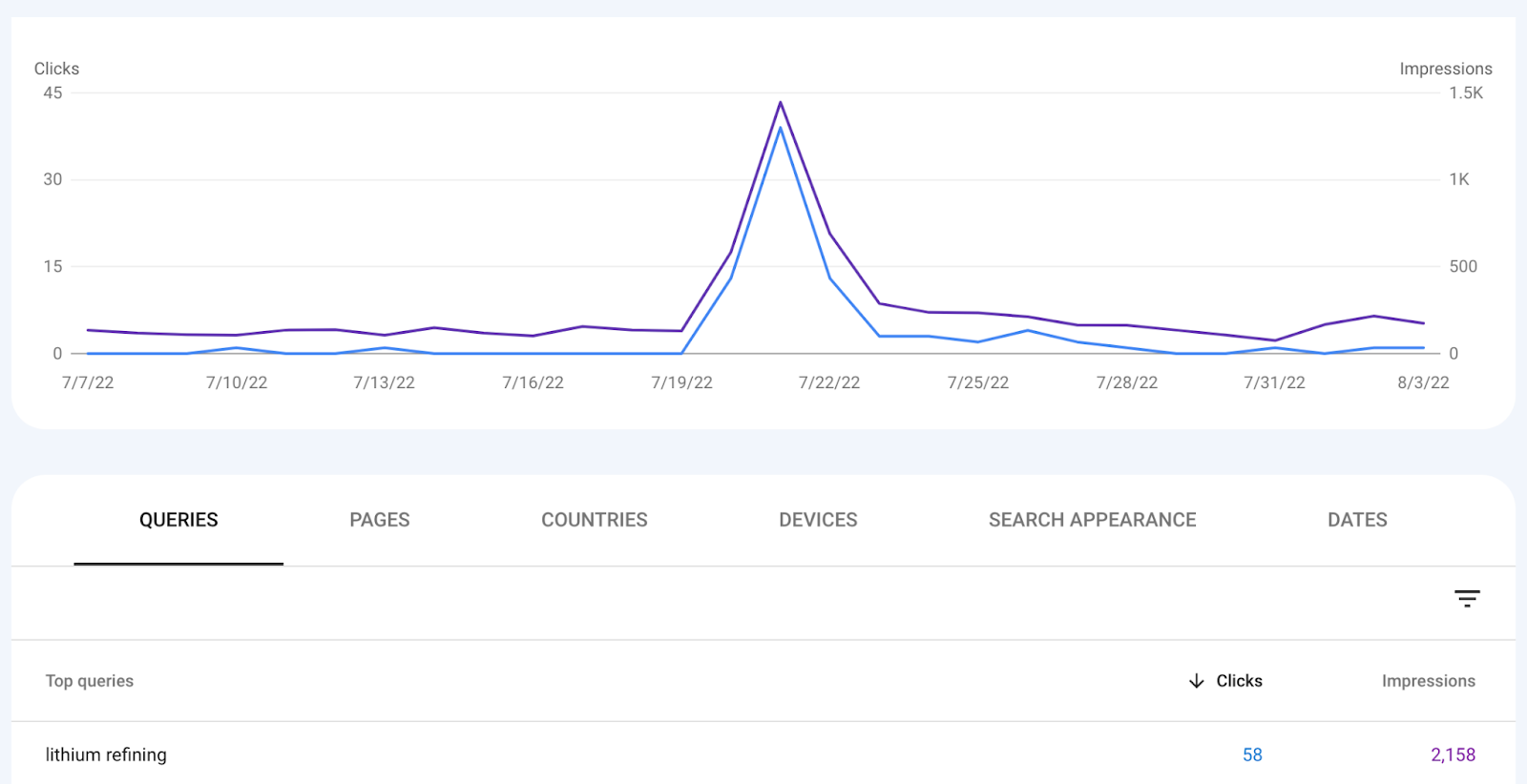Tigercomm talks a lot about improving social media strategies for cleantech companies to compete with incumbent fossil fuel interests. We’ve worked with a strategic SEO agency, Rampiq, for the past few years on our own site and are continuously impressed with the results. We’ve asked Rampiq to write a guest article explaining how clean economy companies can use SEO to boost brand recognition, sales, and the visibility of their products.
What is SEO?
SEO, or search engine optimization, has a lot of definitions. Perhaps the simplest is Wikipedia’s: “The process of improving the quality and quantity of website traffic to a website or a web page from search engines.”
A B2B company can use SEO to improve site visibility on Google or other search engines. The higher you rank in searches, the more people will come to your site as part of their early-stage buying decision. Tracking SEO metrics is also straightforward, so you can forecast B2B sales with SEO.
SEO consists of three major groups of activities: on-page, off-page, and technical SEO. We’ll unpack those here:
- On-page optimization is content you intentionally put on your website to improve your page rankings. It’s here that you have the most control. You define your content policy and the keywords for which you want to be most visible.
- Off-page SEO involves building more links from external sites that mention or promote your website, such as niche directories, investors’ sites, news resources, and really anything you determine is relevant to your business. Off-page SEO can help boost the effectiveness of other PR activities.
- Technical SEO makes sure your website content is accessible by search engines and avoids any technical errors that would prevent content indexing.
Who needs SEO?
Every company with a website needs SEO fundamentals in place. If not, you can be easily outranked by your competitors and your brand visibility will be undermined. It does not matter if you are a B2B company without a point-of-purchase website!
If you want people to find you for any reason, you need to attend to SEO, either by an in-house team or a marketing agency. Even if you don't have direct competitors for some important keywords, you will always be competing with the generic information resources that rank above you.
Why CleanTech companies should invest in SEO
While SEO is a fundamental part of the B2B marketing mix, it’s been somewhat neglected in the cleantech sector. We’ve audited several cleantech company websites, and few had solid SEO health and a consistent content program in place.
That number needs to grow, especially with the passage of the Inflation Reduction Act. Here are three reasons why:
Establishing topical authority with content
Topical authority is important if you care about first impressions. SEO enables the right content to be published and promoted in the right place, like when people are actively searching for answers about a subject your company is an expert on.
This creates trust and positions you as a niche expert. For example, this Cleantech Glossary page on Tigercomm website provides definitions for industry terms in one place, positioning the company as a one-stop-shop for industry information:

Benefits of Local SEO for cleantech
Practically all cleantech companies (except a certain electric car company) need to win over local communities who are being asked to host proposed wind and solar farms. SEO can help you customize your content to specific regions and communities.
For example, you could manage what content first appears on your Google Business Profile and thus make sure your local stakeholders get relevant and timely information when searching for your brand. This gives you a chance to promote content that is most important to your audience and deprioritize irrelevant information for the viewer.
Valuable insights from your organic traffic
With SEO, you can get a closer analysis of your audience's search intent. By using tools like Google Analytics and Google Search Console, you can see which terms you rank for and what content brings in the most viewers.
You can even compare the performance of branded and non-branded keywords, which may surprise you. All of this information helps craft a communications strategy to bring in more leads.
How SEO helps driving organic brand visibility for clean tech companies
First, let's take a look at the difference between branded and non-branded terms.
Branded vs Non-branded terms
A branded term is a keyword or a search phrase that relates to your brand only. For example, for Tigercomm, these terms will include words containing “tigercomm”, the names of the executive team members, and names of company staff.
Users discovering your website on Google from branded searches probably already know about your business in some way. Here are some examples of branded terms of Tigercomm website:

A non-branded term is a phrase related to your services or products, but that phrase usually doesn't contain your brand name. For example, the query “cleantech PR agency” would be a non-branded keyword for Tigercomm. Here are some examples of non-branded terms for Tigercomm:

The ratio of branded vs. non-branded searches for your company is a good indicator of your PR effectiveness and overall marketing activity. When people start searching more for your brand, it means you’ve increased your overall brand visibility. The growth in non-branded keywords' visibility can indicate your growing perception as an industry thought leader, eventually bringing in a new audience.
The total amount of organic keywords
The more keywords your website ranks for - the better it is for your business in general, as this drives your momentum in getting in touch with your audience.
One of the best ways to increase this metric is to design and implement a communication strategy and incorporate content marketing and SEO components into it. Thus, your communication effort will be more holistic and will drive both PR and SEO aspects.
Cleantech SEO & PR: the powerful combo
When it comes to building a powerful Marcom mix, SEO, PR, and an overall communication strategy should be applied simultaneously. This way, you get more visibility and can catch really interesting market trends. Let’s take a look at a case study from Mangrove Lithium.
Mangrove Lithium case study
Tigercomm worked with Mangrove Lithium to create a PR and communications strategy, and Rampiq worked on the technical SEO and on-page SEO for the Mangrove website.
Mangrove works in lithium refining, and our client was really specific about their positioning: we need to focus on lithium refining (not recycling, as this is a completely different process). That is why the website was SEOed for all keywords related specifically to lithium refining.
Here’s how this strategy worked when an industry trend emerged. First, Elon Musk mentioned that lithium refining is a “license to print money” in one of the Tesla earnings meetings.
The popularity of this term exploded:

And so did traffic to the Mangrove Lithium website!
The key to Mangrove Lithium's success was increasing visibility for the right terms exactly when the industry received strong investor signals.
When Musk mentioned Mangrove’s exact technology, the company was already on the first page of Google Results for “Lithium Refining.” Thus, they were able to get a lot of people's eyes on Mangrove organically — and for free.
SEO toolkit: how to measure results
Google Search Console (GSC)
Google Search Console, a free tool by Google, is the main instrument to measure visibility for organic impressions, keywords, and the top performing content, as well as the technical health of your website.
Google Analytics (GA)
Google Analytics is also a free tool by Google. Google Analytics is one of the most accurate tools to analyze your website visitors’ behavior. You can see the traffic sources from which they arrived on your website, how exactly they navigate, which pages they read, the typical user flow that you have between the pages on your website, and so much more.
It will also give you insightful information about what content people read most, where they stop more often, and what are the most popular entry pages and exit pages.
The SEO Tools: Advanced Toolkit
We recommend Ahrefs and SEMrush as SEO tools you can also use to drive your SEO effort. Those are the two flagman subscription-based SEO toolkits that will give you advanced visibility into keyword research, competitors, and niche analysis. They also will give you a pretty good understanding of the technical health of your website currently.
Conclusion
In conclusion, the major benefit of organic traffic and SEO for cleantech companies is to get consistent visibility for both branded and non-branded terms, which in turn will generate organic traffic, leads, and sales for your company.
Adding an SEO component to your cleantech PR and communication strategy supercharges your content effort and strengthens your industry thought-leadership positioning. A strong off-page and local SEO strategy will help your brand to rank higher and run smoother communication with your audience.
Getting to the top of Google results for the terms that really matter for your products and services can also help you catch the attention of your audience, especially for emerging industry trends.
About the Author

Name: Liudmila Kiseleva, CEO at Rampiq
Bio: Liudmila is one of the best-in-class digital marketers and a data-driven, very hands-on agency owner. With top-level education and experience, Liudmila is a true expert when it comes to B2B digital marketing strategies and execution.